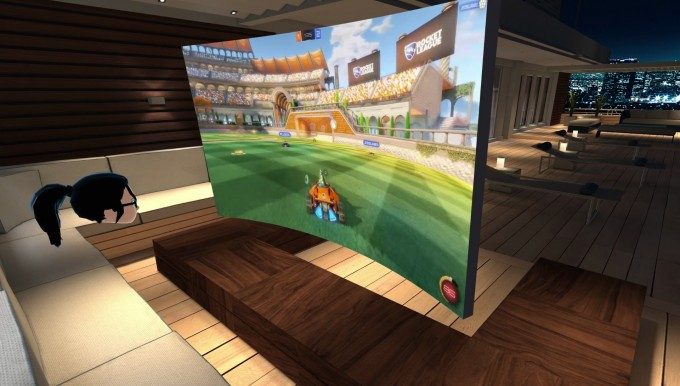Games that are specifically developed for VR are always going to look and play the best in a VR headset, but let’s face it, most of us probably have huge libraries of traditional games, and you may be wondering “Can I play regular games on the Oculus Rift or HTC Vive?”—the answer is yes (with a few caveats), and here’s two ways you can do it.
VorpX (Most Immersive)
VorpX is a made-for-VR ‘3D injector’ which adapts non-VR games into a VR compatible view. The program supports both the Oculus Rift and HTC Vive, and works with “more than 150 DirectX 9, 10 and 11 games in stereoscopic 3D and many more without.” This list shows popular games which are known to work with VorpX.
For supported games, the program gives you a 3D view through the headset and headtracking (including positional tracking), which makes it feel like you’re looking around inside of the game. Some games don’t support positional tracking which means only head rotations will be tracked.
Although this can be an amazing way to play many of your favorite non-VR games in VR, the truth is that—depending upon the game—it won’t be as good as playing a made-for-VR game, for two major reasons.
First, games not specially made for VR will feature traditional movement like running with the keyboard and turning with the mouse. For many users, this sort of movement can lead to nausea, though sensitivity varies greatly from person to person and game to game.
Second, games not made for VR will do things to the game camera which are not comfortable when the game camera is your head (thanks to the headset): traditional games will often take control of the camera to zoom around during cutscenes, or send it falling or spinning when you die. In VR this can be quite uncomfortable, as if someone was taking your head and yanking it around. Non-VR games will also often attach a HUD to the camera as well as a gun, which will feel like those elements are ‘attached’ to your face, so as you turn your head your gun goes with it.
It’s possible to have a great experience in many games this way, especially if you spend some time tweaking VorpX’s variety of options (there’s plenty of guides out there to help you get the settings just right for specific games), but be weary of the fact that games not made to be played in VR can be less than comfortable when played in a VR headset.
Virtual Cinemas (Most Comfortable)
 Instead of wrapping the view completely around you as if you were standing inside the game, another option is to play traditional games on a virtual cinema screen. This is great for playing non-VR games that aren’t comfortable or simply aren’t suited for a full VR mode (like games played from a top-down or side-scroller perspective). In such a mode you’ll see your game as if it was played on a big screen TV, which can actually be quite immersive depending upon how big you make the screen.
Instead of wrapping the view completely around you as if you were standing inside the game, another option is to play traditional games on a virtual cinema screen. This is great for playing non-VR games that aren’t comfortable or simply aren’t suited for a full VR mode (like games played from a top-down or side-scroller perspective). In such a mode you’ll see your game as if it was played on a big screen TV, which can actually be quite immersive depending upon how big you make the screen.
VorpX 3D Cinema Mode (Included with VorpX)
VorpX has a virtual cinema built-in, which is nice because it means you’ll have the ability to play many games in a full VR mode or a more comfortable mode on a virtual screen, all in one package.
SteamVR (Free)
SteamVR has its own built-in virtual cinema mode which Valve calls Desktop Theater. Inside you’ll see a big virtual display which can be resized. To launch games inside of SteamVR’s Desktop Theater, just launch SteamVR first (the little ‘VR’ icon at the top right of Steam), then launch a non-VR game from your library like usual (or use the VR interface). As far as we know, only games that support Steam Broadcasting are compatible.
Bigscreen (Free)
Bigscreen is another virtual cinema option with a cool twist. In addition to being able to see your computer desktop and play games on it in VR, in Bigscreen you can invite other VR players into your virtual space so that you can talk to each other and see each other’s screens, as if you were hanging out at a virtual LAN party. Bigscreen is available on both Steam and the Oculus Store, which means Rift and Vive players can play together.
Disclosure: Road to VR has an affiliate partnership with Vorpx.







